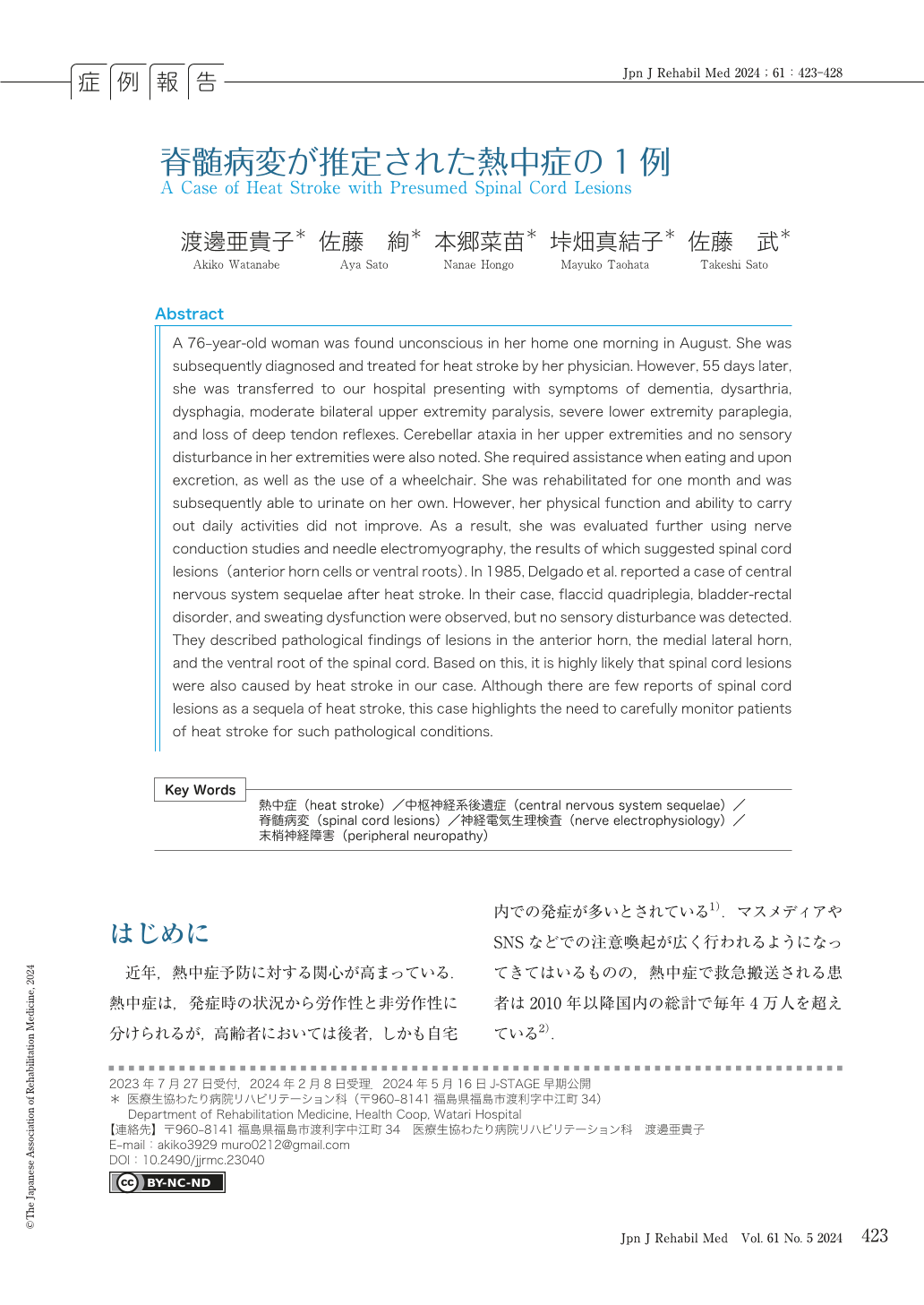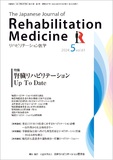Japanese
English
- 販売していません
- Abstract 文献概要
- 1ページ目 Look Inside
- 参考文献 Reference
はじめに
近年,熱中症予防に対する関心が高まっている.熱中症は,発症時の状況から労作性と非労作性に分けられるが,高齢者においては後者,しかも自宅内での発症が多いとされている1).マスメディアやSNSなどでの注意喚起が広く行われるようになってきてはいるものの,熱中症で救急搬送される患者は2010年以降国内の総計で毎年4万人を超えている2).
日本救急医学会の熱中症に関する委員会が実施した症例調査(Heatstroke STUDY 2012)3)によれば,2012年に国内の103施設で熱中症と診断された2,130例のうち,中枢神経系後遺症を生じたのは20例で0.9%であったという.その中で最も多かったのは高次脳機能障害で60%(12例),嚥下障害15%(3例),小脳失調10%(2例),歩行障害10%(2例)となっていた.海外を含めた他の文献では,中枢神経系の後遺症として記憶障害および精神症状4),錐体路症状5),錐体外路症状6),脊髄障害7, 8),末梢神経障害9, 10)なども報告されている.
今回,筆者らは,両下肢の強い弛緩性麻痺を呈し,神経電気生理検査の結果から脊髄病変(脊髄前角細胞の障害あるいは脊髄前根の障害)が疑われた1症例のリハビリテーション治療を経験したので報告する.本人および家族に対し本報告の主旨についての説明を行い,情報公開について書面で承諾を得た.
Abstract A 76-year-old woman was found unconscious in her home one morning in August. She was subsequently diagnosed and treated for heat stroke by her physician. However, 55 days later, she was transferred to our hospital presenting with symptoms of dementia, dysarthria, dysphagia, moderate bilateral upper extremity paralysis, severe lower extremity paraplegia, and loss of deep tendon reflexes. Cerebellar ataxia in her upper extremities and no sensory disturbance in her extremities were also noted. She required assistance when eating and upon excretion, as well as the use of a wheelchair. She was rehabilitated for one month and was subsequently able to urinate on her own. However, her physical function and ability to carry out daily activities did not improve. As a result, she was evaluated further using nerve conduction studies and needle electromyography, the results of which suggested spinal cord lesions (anterior horn cells or ventral roots). In 1985, Delgado et al. reported a case of central nervous system sequelae after heat stroke. In their case, flaccid quadriplegia, bladder-rectal disorder, and sweating dysfunction were observed, but no sensory disturbance was detected. They described pathological findings of lesions in the anterior horn, the medial lateral horn, and the ventral root of the spinal cord. Based on this, it is highly likely that spinal cord lesions were also caused by heat stroke in our case. Although there are few reports of spinal cord lesions as a sequela of heat stroke, this case highlights the need to carefully monitor patients of heat stroke for such pathological conditions.

Copyright © 2024, The Japanese Association of Rehabilitation Medicine. All rights reserved.


